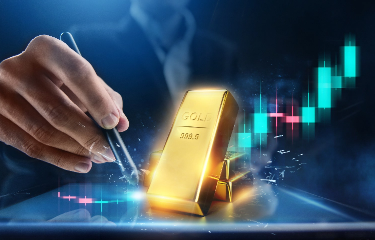79tka Insights
Your go-to source for the latest news and information.
Gold Rush Reimagined: Why Everyone's Trading This Glittering Asset
Discover the allure of gold trading! Uncover the secrets behind its rising demand and why savvy investors are joining the rush today.
The New Gold Standard: How Modern Investors Are Navigating the Gold Market
The gold market has seen a significant transformation in recent years, as modern investors adapt to an ever-evolving financial landscape. With rising inflation, geopolitical tensions, and market volatility, the allure of gold as a safe-haven asset has risen dramatically. Today, both institutional and retail investors are employing innovative strategies to navigate this precious metal's complexities, leveraging technology and data analytics to make informed decisions. The introduction of exchange-traded funds (ETFs) and digital gold platforms has revolutionized access and management, allowing even novice investors to participate in this traditionally exclusive market.
In addition to traditional physical gold investments, savvy investors are increasingly diversifying their portfolios with gold mining stocks, which often provide a more substantial risk-reward ratio. The current market dynamics highlight the importance of a well-rounded strategy; investors are urged to consider factors such as production costs, geopolitical risks in mining operations, and the overall health of the global economy. As the gold market continues to evolve, those who employ a mix of traditional and modern investment tactics may very well position themselves to benefit from the increasing value and stability that gold offers.

Is Gold Still a Safe Haven? Exploring Its Role in Today's Economy
The question of whether gold remains a safe haven in today's economy is more pertinent than ever. Traditionally viewed as a store of value, gold has acted as a hedge against inflation and economic instability. In recent years, economic uncertainties, including rising inflation rates and geopolitical tensions, have prompted investors to reconsider their portfolios. As central banks worldwide continue to implement expansionary monetary policies, the allure of gold as a safeguard against currency devaluation has re-emerged, resulting in increased demand and higher prices. This trend suggests that gold still holds significant value as a safe haven asset, particularly during periods of market volatility.
However, it's essential to recognize that the dynamics of the modern economy have shifted. The rise of cryptocurrencies and other alternative investments presents new challenges to gold's traditional role. While these digital assets offer unique benefits, many investors continue to turn to gold for its tangibility and historical track record. A 2023 survey revealed that a majority of investors still view gold as a crucial component of a diversified investment strategy. As we navigate the complexities of today's economic landscape, understanding the multifaceted role of gold can help investors make informed decisions about their financial futures.
Top Strategies for Diversifying Your Portfolio with Gold Investments
Investing in gold can be one of the most effective ways to diversify your portfolio. By adding gold to your investment mix, you can hedge against inflation and economic downturns. One effective strategy is to allocate a percentage of your portfolio to physical gold, such as bullion or coins, which provides a tangible asset that holds intrinsic value. Additionally, consider including gold exchange-traded funds (ETFs) that track the performance of gold prices, allowing you to gain exposure without the need for physical storage. This dual approach not only mitigates risk but also enhances your investment potential.
Another strategy to consider is investing in gold mining stocks and mutual funds. These investments can provide leverage to gold prices while also offering the potential for dividends. When choosing gold mining stocks, look for companies with strong balance sheets and a proven track record of production, as they can outperform physical gold in a rising market. Furthermore, keeping abreast of geopolitical events and market trends is vital for making informed decisions about your gold investments. By remaining proactive and flexible with your allocation, you can optimize your portfolio for long-term growth.